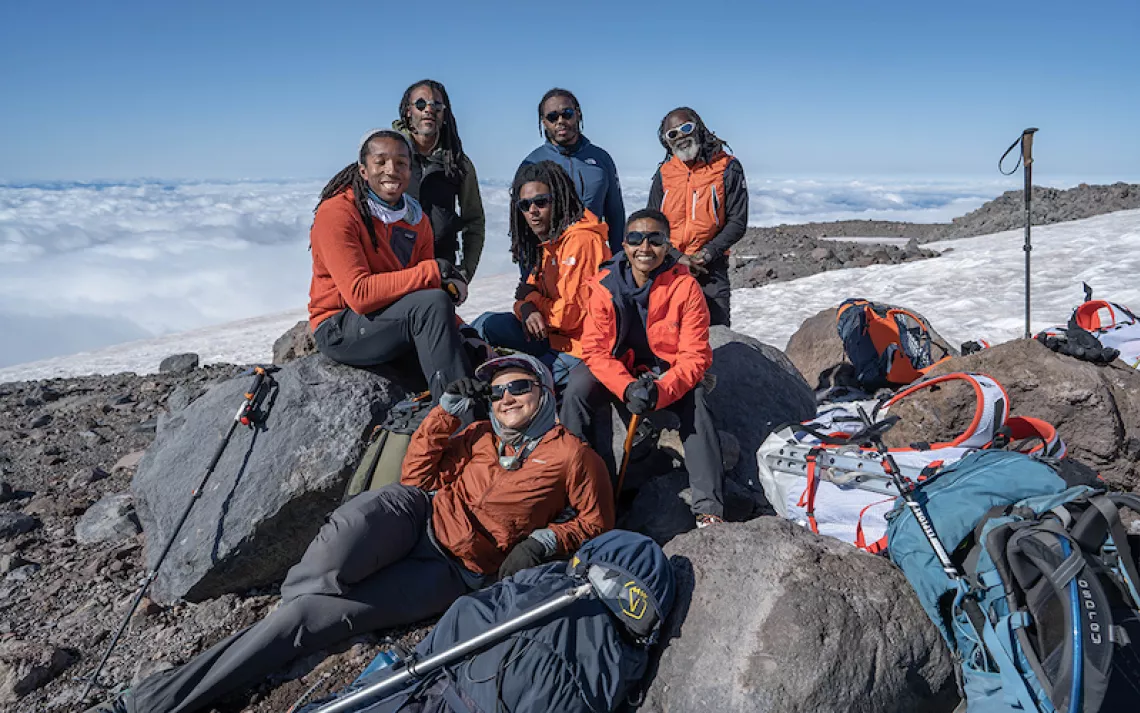The Kick-Ass Female Mountaineer You Never Heard Of
Annie Smith Peck, the forgotten “Queen of the Climbers”
 History, so often penned by males, skips over many fascinating females. Hannah Kimberley introduces us to one of these overlooked heroines in A Woman’s Place Is at the Top: A Biography of Annie Smith Peck, Queen of the Climbers (St. Martin’s Press, 2017). Peck—a scholar, mountaineer, and suffragette in the early 1900s—made the first ascent of Peru’s Mount Huascarán (elevation 22,205 feet), and once held the title of having been higher in elevation than any other woman. She was peak-bagging around South America in an era when it was scandalous for women to wear pants, let alone climb mountains.
History, so often penned by males, skips over many fascinating females. Hannah Kimberley introduces us to one of these overlooked heroines in A Woman’s Place Is at the Top: A Biography of Annie Smith Peck, Queen of the Climbers (St. Martin’s Press, 2017). Peck—a scholar, mountaineer, and suffragette in the early 1900s—made the first ascent of Peru’s Mount Huascarán (elevation 22,205 feet), and once held the title of having been higher in elevation than any other woman. She was peak-bagging around South America in an era when it was scandalous for women to wear pants, let alone climb mountains.
“Peck was one of the most accomplished women of the twentieth century that I had never heard of,” writes Kimberley, who decided to make the mountaineer the focus of her PhD studies after discovering a picture of Peck in an antique shop a decade ago. She had extraordinary resources for doing so; even though historical narratives excluded her, Peck wanted her story told, and she catalogued letters, notes, diaries, newspaper articles, and other resources for that expressed purpose. These materials allowed Kimberley to craft an artful narrative of Peck’s life, offering the reader both a sense of Peck’s personality and the epoch within which she lived, in addition to lively accounts of her adventures.
An educated young woman from a well-to-do Providence family, Peck was ambitious, precocious, stubborn, and a self-determined perfectionist—in other words, a born mountaineer. She discovered climbing later in life, having spent much of her 20s aimless and aspiring to goals she couldn't reach because of her gender, such as a college degree. A family friend once told her that “she ought to have been a boy.”
But Peck persisted. “From the time she was in her late teens,” Kimberley writes, “the response to everything that Annie set out to accomplish was ‘No.’ Ever the competitor, to each no Annie answered, ‘Yes, I can.’ And then she proved it.” Peck eventually became one of the first women to earn a degree from the University of Michigan, at a time when prevailing notions—such as that female education would cause infertility—barred most women from higher education.
Initially drawn to mountain air as a cure for her poor health, Peck found freedom and an outlet for her ambitions at high altitudes. She was not a fast climber, but her steady pace assured an ascent, and she was often bolder than her male climbing companions. (Many of her summit plans were foiled by the timidity of others in her expedition party.) She never did find a consistent climbing or romantic partner. She made her living lecturing and writing about her climbs and academic passions.
This rhetorical prowess served her well later in life, when she committed herself to women’s rights and suffrage. She was a “birdlike woman,” writes Kimberley, who “did not fit the husky mountain climber image” that her audiences had in mind, yet she consistently exceeded others’ expectations. With precise language and robust descriptions, Kimberley pulls this slight, wily woman out of the vaults of history and inserts Annie Smith Peck in her rightful place among our country’s most accomplished mountaineers and social leaders.
 The Magazine of The Sierra Club
The Magazine of The Sierra Club



